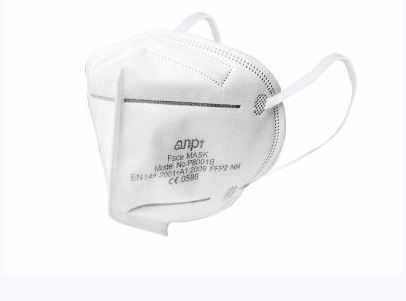In the ongoing battle against infectious diseases like COVID-19, the use of disposable medical masks has become a common practice. However, despite their widespread use, many individuals inadvertently make mistakes that can compromise the effectiveness of these masks. Understanding these common errors and knowing how to avoid them is crucial for ensuring maximum protection.
Improper Fitting: One of the primary mistakes is wearing the mask improperly, leading to gaps around the edges that diminish its protective capabilities. To avoid this, ensure that the mask fits snugly over your nose, mouth, and chin without any gaps. Adjust the mask's nose wire or metal strip to conform to the shape of your nose for a secure fit.
Touching the Mask Frequently: Another common error is touching the
Disposable medical masks frequently, especially the front part. This can transfer contaminants from your hands to the mask, compromising its cleanliness and efficacy. Once you've put on the mask, refrain from touching it. If adjustments are needed, handle the mask by the ear loops or ties.
Reusing Single-Use Masks: Disposable medical masks are designed for single use only. Reusing them can lead to a reduction in filtration efficiency and increase the risk of contamination. Always use a fresh, new mask for each outing and dispose of used masks properly.
Wearing the Mask Upside Down: Some disposable masks have a top and bottom orientation, with the top indicated by a colored side or a metal strip for the nose bridge. Wearing the mask upside down can compromise its fit and filtration efficiency. Ensure you wear the mask with the correct side facing outward for optimal protection.
Neglecting Hand Hygiene: Proper hand hygiene is essential when handling masks. Wash your hands with soap and water or use hand sanitizer before and after touching the mask. This reduces the risk of transferring germs to or from the mask.
Wearing a Damp or Soiled Mask: Moisture from breathing or sweat can dampen the mask, reducing its effectiveness and comfort. Replace the mask if it becomes damp, soiled, or damaged during use to maintain optimal protection.
Improper Removal: When removing the mask, avoid pulling it down under your chin or leaving it hanging from one ear. This can expose you to contaminants and negate the mask's protective benefits. Remove the mask by the ear loops or ties and discard it immediately in a closed trash bin.
Ignoring Discomfort: If the mask causes discomfort such as difficulty breathing or skin irritation, do not ignore it. Consider trying a different mask type or size that provides a better fit and greater comfort without compromising protection.
Improper Disposal: After use, dispose of
disposable medical masks in a closed trash bin. Do not leave used masks lying around, as they can pose a contamination risk to others.
Overestimating Mask Efficacy: While masks are an important tool in preventing the spread of infectious diseases, they are not a substitute for other preventive measures such as social distancing and frequent handwashing. Avoid overestimating the mask's efficacy and continue to practice comprehensive infection control measures.
